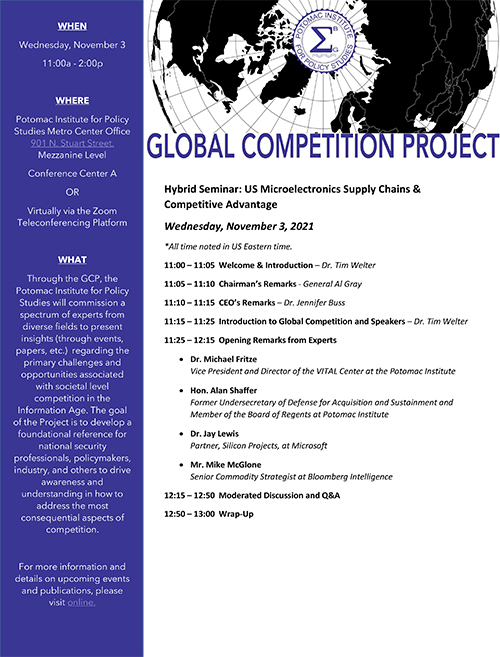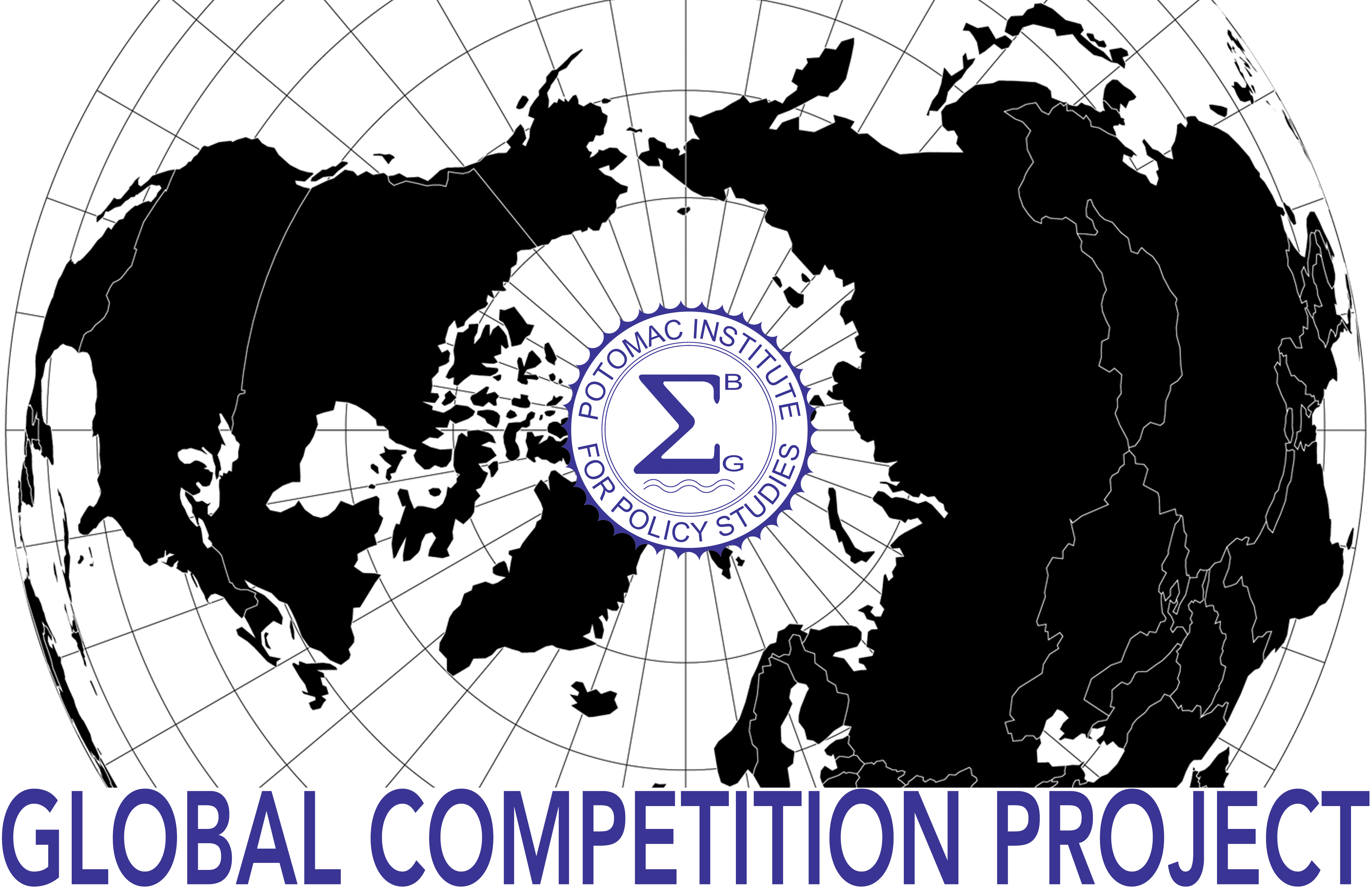Uncategorized
November 3, 2021
The headlines are plentiful with stories of serious supply chain issues that have erupted during the COVID-19 pandemic; disruptions and shortages have affected virtually every household in the country, bringing to light just how dependent Americans are on the global supply chain system and vulnerable to its shortfalls. Lack of product and increasing prices have impacted every American, from CEOs to line workers and even school children. The situation has spurred a substantial public dialog regarding the implications of our supply chain vulnerabilities and what they mean for future U.S. prosperity and security.
On November 3, 2021, the Potomac Institute for Policy Studies hosted an event focused on this challenge as part of its Global Competition Project (GCP) series. A panel of subject matter experts examined the state of U.S. supply chains and how they factor into our nation’s ability to gain and maintain competitive advantages on the global stage. Specific attention was paid to the state of microelectronic supply chains due to its key role in both the economic prosperity and national security of the country. Dr. Michael Fritze, Vice President at the Potomac Institute, facilitated the discussion of panel members which also included the Honorable Alan R. Shaffer, former Deputy Undersecretary of Defense and Potomac Institute Board of Regents member; Dr. Jay Lewis, Partner, Silicon Projects at Microsoft; and Mr. Mike McGlone, Senior Commodity Strategist at Bloomberg Intelligence.
Read more: GCP Hybrid Seminar: US Microelectronics Supply Chains & Competitive Advantage
Summary
News of the Peoples Republic of China’s (PRC) first successful test of a hypersonic missile perforated the headlines in August. The test sent a nuclear-capable hypersonic missile into low-earth orbit around the globe to its target, demonstrating potential to circumvent U.S. missile defense systems and possibly strike North American targets. Media commentary suggested it was a “Sputnik moment” for the PRC, a reference to 1957 when the Soviet Union launched Sputnik 1, the first successful satellite to orbit the earth, signaling that the U.S.’s geopolitical rival achieved a level of technological prowess that effectively challenged its position as a global superpower. Whether the comparison is hyperbole or fact is arguable. However, it is a clear indication matched with other geopolitical and economic signs that the U.S. has a contemporary competitor in the PRC, challenging its position on the world stage, and not just from a security standpoint. As the U.S. gains an appreciation for the emerging competitive environment, the first of many serious questions must be asked: What does it actually mean to compete? What defines competition in this context?
Never in human history has an individual had the ability to communicate with so many others so easily. With technologies like the Internet, personal computers, and smartphones, a powerful reality has emerged: A simple message or piece of information, regardless of its origin or truth, can lend to unraveling the stability and success of a nation. A single posting to social media, can sway millions, if not billions. Indeed, the world is at an inflection point with regard access to and proliferation and manipulation of information at scale.
America’s global competitors have recognized and embraced the opportunities that come with that inflection. They have implemented strategic messaging campaigns to project narratives to help them pursue foreign policy and other national objectives, which include manipulating information to incite political and economic destabilization on the international stage. Examples range from Russia’s use of social media to manipulate the U.S. elections in 2016 and 2020, to the extensive Chinese censorship and disinformation campaigns used to cover up the imprisonment of ethnic minorities in concentration camps, to explaining the disappearance of political dissidents by the state. Each instance represents the shaping of information to influence thoughts and actions via widely available technology platforms; deliberate efforts to drive policy agendas. Strategic communication is a clearly elevated means to gain leverage in today’s globally competitive environment. However, the consequences, to include technological, biological, and psychological aspects of such campaigns and en masse information manipulation, have only just begun to be recognized by the United States.
Read more: GCP Public Event – Strategic Communications & Information in Competition



